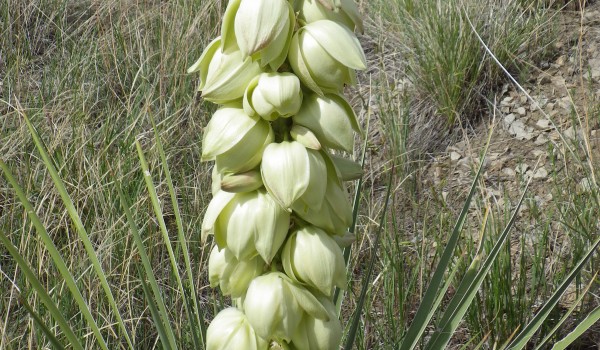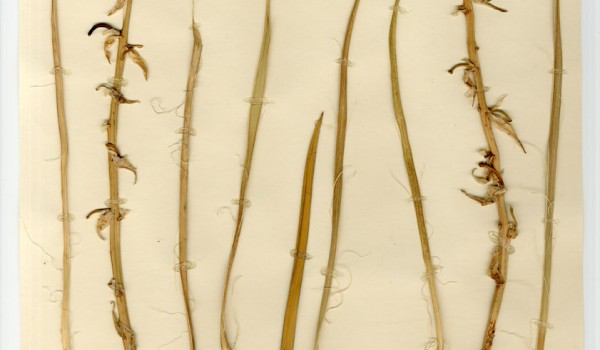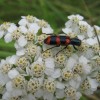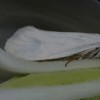Asparagus (Asparagaceae)
Soapweed
Yucca glauca Nutt.This spiky-leaved evergreen plant and its Yucca Moth pollinator depend on each other for survival. Female moths pollinate Soapweed by intentionally collecting and transferring pollen between flowers. This ensures enough seeds for the larvae to eat, and for plants to reproduce. Populations are threatened by habitat loss, flower consumption by herbivores, and low numbers of the Yucca Moth. Various parts of the plant have been used as food, soap, and for other purposes.
Flower Colour:
- White
Flowering Season:
- Spring
- Summer
Flowering Months:
- June
- May
Canadian Rarity Status:
Protected under Canada’s Species at Risk Act and is considered “at risk” in Alberta. The collection of wild plants and seeds is illegal on public lands.
Physical Appearance:
The stiff, linear, pointed leaves of this perennial grow in a basal cluster, 20-50 cm tall. A single flowering stalk emerges from the centre of the plant, and grows to 100 cm. The numerous drooping flowers occur at the top of the stalk in an elongated cluster. Each flower is 3-5 cm long and bell-shaped with 6 leathery egg-shaped tepals. The dry fruit capsule contains many black, disc-shaped seeds.
Gardening Notes:
Do not purchase wild-collected seeds or plants. Seeds and/or plants from nursery-raised stock may be available.
Canadian Distribution:
- Alberta
Prairie Types:
- Mixed Grass Prairie
Habitats:
- Prairies
- South-facing Coulee Slopes
Moisture Conditions:
- Dry
Light Preference:
- Full Sun
Soil Preference:
- Alkaline
- Clay
- Silt








 Checkered Beetles (
Checkered Beetles ( Yucca Moths (
Yucca Moths (